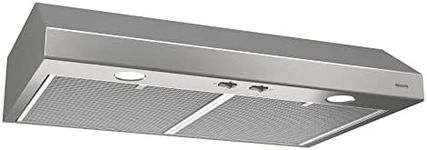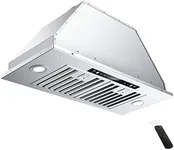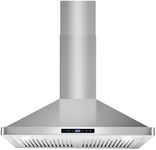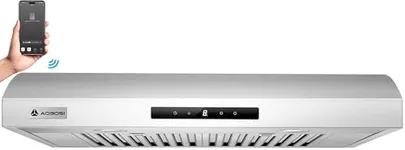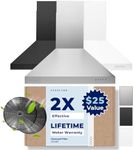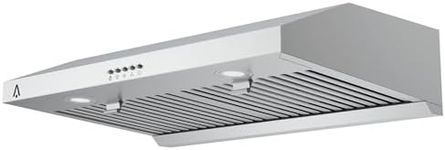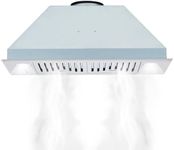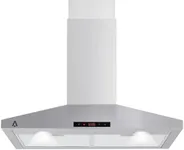Buying Guide for the Best Range Hoods
Choosing the right range hood for your kitchen is essential for maintaining a clean and odor-free cooking environment. A range hood helps to ventilate your kitchen by removing smoke, steam, and cooking odors. When selecting a range hood, consider the size of your kitchen, your cooking habits, and the type of stove you have. Here are some key specifications to help you make an informed decision.SizeThe size of the range hood is crucial because it needs to cover the entire cooking surface to effectively capture smoke and odors. Range hoods typically come in widths of 24, 30, 36, and 48 inches. To choose the right size, measure the width of your stove or cooktop and select a range hood that is at least as wide as your cooking surface. If you have a larger kitchen or do a lot of high-heat cooking, consider a wider range hood for better coverage.
CFM (Cubic Feet per Minute)CFM measures the amount of air a range hood can move in one minute. This spec is important because it determines the hood's ability to ventilate your kitchen effectively. For light cooking, a range hood with 200-300 CFM may suffice. For moderate cooking, look for 300-500 CFM. For heavy cooking or if you have a large kitchen, consider a range hood with 500+ CFM. Your cooking habits and kitchen size will guide you in choosing the appropriate CFM.
Noise LevelThe noise level of a range hood is measured in sones. This spec is important because a quieter range hood will make your cooking experience more pleasant. Range hoods typically range from 1 to 7 sones. A range hood with 1-3 sones is considered quiet, while 4-6 sones is moderate, and 7+ sones can be quite loud. If you are sensitive to noise or have an open kitchen layout, opt for a range hood with a lower sone rating.
Ventilation TypeRange hoods can be ducted or ductless. Ducted range hoods vent air outside, which is more effective at removing smoke and odors. Ductless range hoods use filters to clean the air and recirculate it back into the kitchen. If you have the option to install ductwork, a ducted range hood is generally preferred. However, if ducting is not possible, a ductless range hood with high-quality filters can still be effective. Your kitchen layout and installation possibilities will determine the best choice for you.
FiltersFilters are essential for trapping grease and other particles. Range hoods typically use either mesh or baffle filters. Mesh filters are made of aluminum or stainless steel and are easy to clean but may need frequent maintenance. Baffle filters are more durable and efficient at trapping grease but can be more expensive. Consider your cooking habits and how often you are willing to clean the filters when choosing between mesh and baffle filters.
LightingMany range hoods come with built-in lighting to illuminate your cooking area. This spec is important for visibility and safety while cooking. Look for range hoods with LED or halogen lights, as they provide bright and energy-efficient illumination. Consider the number and placement of lights to ensure even coverage of your cooking surface. If you often cook in the evening or have a dimly lit kitchen, prioritize a range hood with good lighting.
Control TypeRange hoods can have different types of controls, such as push buttons, touch controls, or remote controls. This spec is important for ease of use and convenience. Push buttons are straightforward and reliable, while touch controls offer a sleek, modern look. Remote controls provide added convenience, especially for high-mounted range hoods. Consider your preference for ease of use and the overall aesthetic of your kitchen when choosing the control type.


